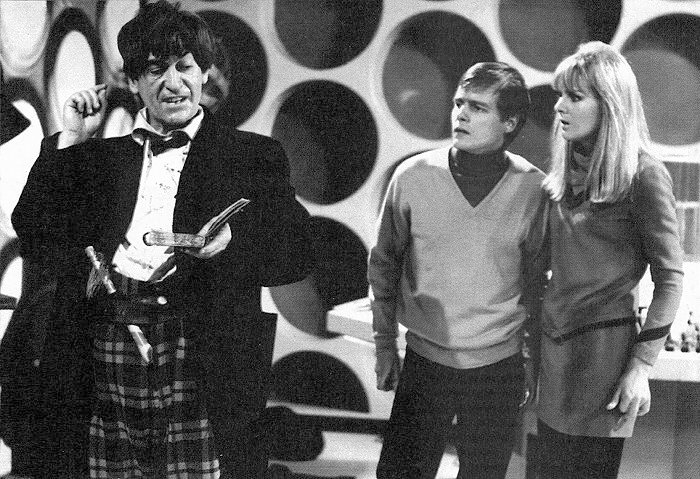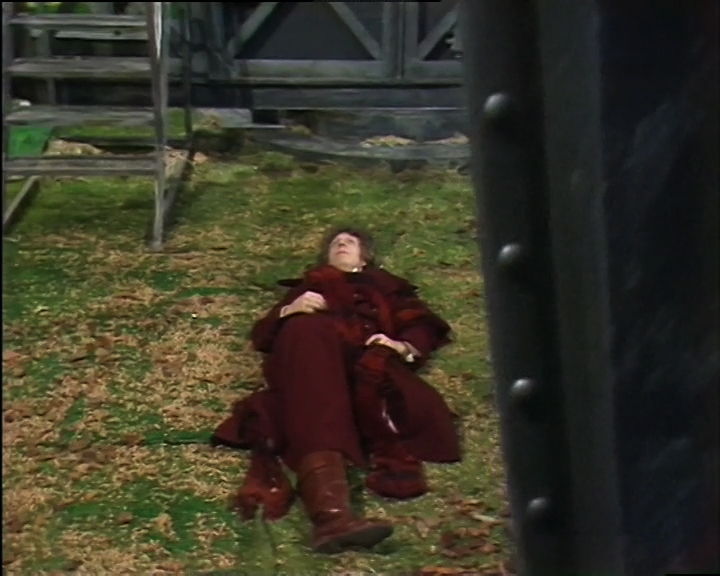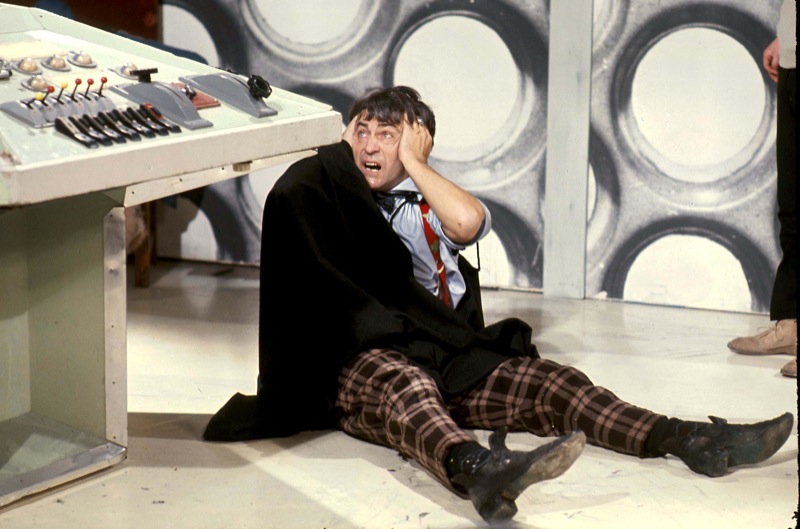That’s the trouble with Doctor Who regenerations – you never quite know what you’re going to get. Or what you’ll be wearing!

Doctor Who regenerations can be a complicated business, and at the end of the latest episode we witnessed a transition that was unprecedented in the Whoniverse. Not only did the transformation take place outside the TARDIS (the first since 1996, unless you count ‘The Night of the Doctor‘) but it also saw the Time Lord return with a face he’d worn before.
But more interestingly, unlike previous Doctor Who regenerations, we also saw something unusual. It wasn’t just the Doctor’s body that changed, but his entire outfit. Gone was the grey overcoat, braces and rainbow sweater – these were seemingly burned away and replaced with a blue jacket, shirt, tie, waistcoat and chequered trousers.
And in the latest issue of Doctor Who Magazine, the new showrunner Russell T Davies discusses this transition and why it was different from previous Doctor Who regenerations. Certainly, the decision to ‘burn away’ the previous Doctor’s outfit and replace it with a new one was a conscious one.
Speaking to the magazine, and quoted in the Radio Times, Davies explained: “I was very certain that I didn’t want David to appear in Jodie’s costume. I think the notion of men dressing in ‘women’s clothes,’ the notion of drag, is very delicate. I’m a huge fan of that culture and the dignity of that, it’s truly a valuable thing.
“But it has to be done with immense thought and respect. With respect to Jodie and her Doctor, I think it can look like mockery when a straight man wears her clothes. To put a great big six-foot Scotsman into them looks like we’re taking the mickey.”
Davies was also concerned that Tennant would be mocked for dressing in this way, and that a photo of him dressed as the Thirteenth Doctor would be endlessly reprinted – something that hasn’t been an issue with previous Doctor Who regenerations, as this was the first time (on screen, at least) that we’ve seen a female to male regeneration.
“If they can play with gender in a sarcastic or critical way, they will,” Davies went on. “We could have the Doctor dressed as a knight, or dressed as God, or dressed as William Hartnell, and the only photo they’d print would be of David in what they considered to be women’s clothes.”
This certainly raises an interesting question: If it’s just the Doctor’s body that regenerates, why would his or her clothes change? With previous Doctor Who regenerations, the clothes typically haven’t, and some Doctors have spent a certain amount of time (even whole episodes) in their predecessors’ outfits before slipping into something that belongs to their Doctor.
You will notice we said “typically” – because there have been times in previous Doctor Who regenerations when the clothes have changed along with the body. The more subtle of these was when Tom Baker regenerated into Peter Davison and, for reasons unknown, his knee-high leather boots went with him, leaving the Fifth Doctor with a pair of shoes instead.

(C) BBC Studios
Could there be a timey wimey explanation fort his? Certainly, if there is some mystical process that goes on over the course of Doctor Who regenerations, it may well be that the Fifth Doctor anticipated that he’d be more of a ‘shoes’ kind of person (pre-empting the cricketing love that followed) and this somehow bent the laws of physics to provide him with more fitting footwear.
But in reality, it’s more likely that Tom Baker’s boots were the wrong size for Davison, and they decided to give him shoes instead. Or it could have been a continuity error.
Less subtle is the complete change of costume that occurred during the very first of the Doctor Who regenerations, when William Hartnell transformed into Patrick Troughton. On this occasion, the Doctor’s Edwardian garb was replaced with a raggedy shirt, a bow tie, braces and chequered trousers – although, interestingly, the Second Doctor retained the cape that his predecessor had worn in ‘The Tenth Planet.’
And in the continuity of Doctor Who regenerations, this one is somewhat easier to skim over as the Second Doctor’s first story (‘The Power of the Daleks‘) is mostly missing from the BBC archive, apart from a few stills and film fragments. So Doctor Who fans have never really had to address the ‘problem’ of the costume change in this instance, as they never had to see it! (Unless, of course, they were among the lucky people to have seen it on original broadcast…)

(C) BBC Studios
Moreover, at this point in the programme’s history, the Doctor Who regenerations were still in their formative stages. At the end of ‘The Tenth Planet,’ all the production team knew was that they would be replacing William Hartnell with Patrick Troughton, and this mysterious process would only be vaguely addressed. “This old body of mine is wearing a bit thin,” says the First Doctor to his companion Polly. And in ‘The Power of the Daleks,’ the Doctor further explains that he has been “renewed,” adding that “it’s part of the TARDIS” and that without it he couldn’t survive.
With this logic, it makes sense that his clothes would change as well, if it’s some unseen timey wimey power that can bend the laws of physics. But of course, we now know (from as early as ‘Planet of the Spiders’) that Doctor Who regenerations are cellular, not garb-ullar! So how can we explain the Fifth Doctor’s new shoes in ‘Castrovalva,’ and the Fourteenth Doctor’s completely new outfit in ‘The Power of the Doctor’?
We can’t. At least, not for now. But what do you think is the canonical explanation for the Doctor’s regenerating clothes? Let us know in the comments below.

Cybermen Doctor Who scarf – order now from the Lovarzi shop!







Leave a Reply